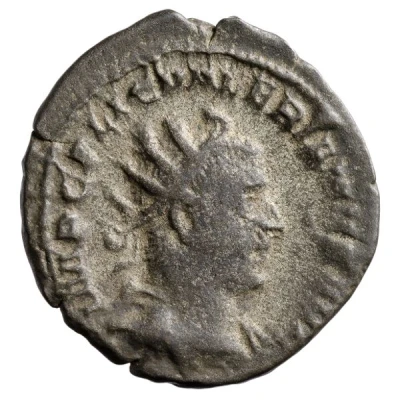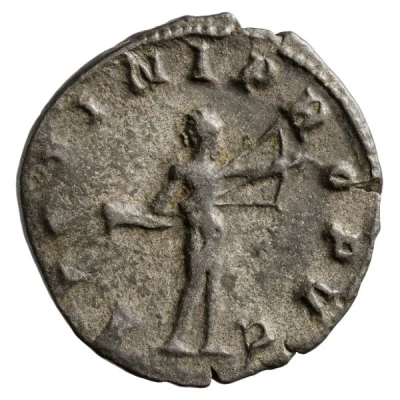Antoninianus - Valerianus BONAE FORTVNAE; Fortuna
| Silver | - | - |
| Issuer | Rome › Roman Empire (27 BC - 395 AD) |
|---|---|
| Emperor | Valerian (Publius Licinius Valerianus) (253-260) Gallienus (Publius Licinius Egnatius Gallienus) (253-268) |
| Type | Standard circulation coin |
| Years | 253-257 |
| Value | Antoninianus (1) |
| Currency | Antoninianus, Reform of Caracalla (AD 215 – 301) |
| Composition | Silver |
| Shape | Round (irregular) |
| Technique | Hammered |
| Demonetized | Yes |
| Updated | 2024-10-05 |
| Numista | N#285944 |
|---|---|
| Rarity index | 100% |
Reverse
Fortuna, draped, standing left, holding rudder in right hand and cornucopiae in left hand.
Script: Latin
Lettering: BONAE FORTVNAE
Translation:
Bonae Fortunae.
To good fortune.
Comment
Source:Online Coins of the Roman Empire (OCRE)
Interesting fact
The Antoninianus - Valerianus coin was part of a series of coins issued during the reign of Emperor Valerian (253-260 AD) and his son Gallienus (253-268 AD). The coin features the goddess Fortuna on the reverse, which was a common motif on Roman coins during this period. The use of Fortuna on coins was meant to symbolize the idea of good fortune and prosperity for the Roman Empire. However, the reign of Valerian and Gallienus was marked by a series of military disasters, including the capture of Rome by the Goths in 255 AD, and the loss of many Roman territories. Despite these challenges, the Antoninianus - Valerianus coin remains a popular collector's item among numismatists today, due to its historical significance and the beauty of its design.

